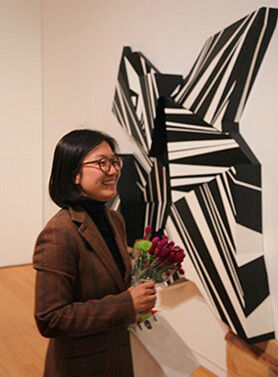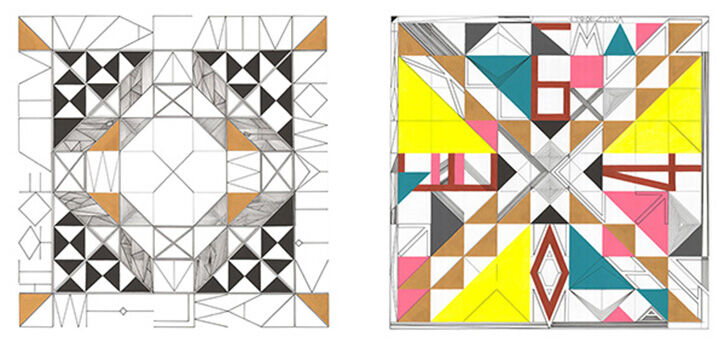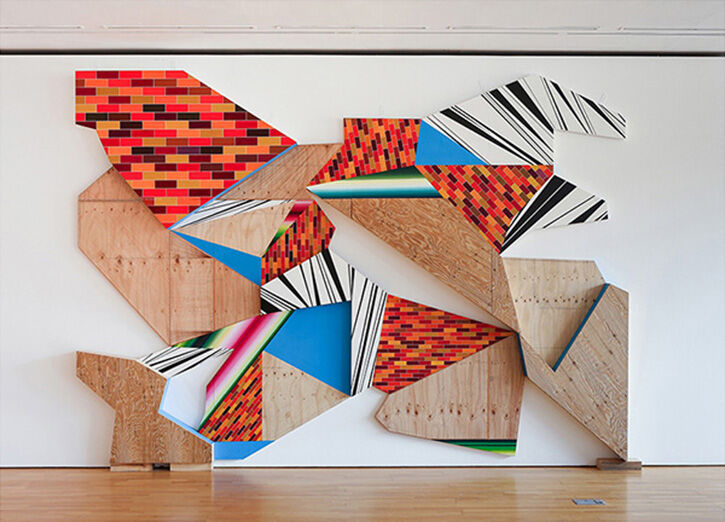
Q&A with Kyung Hwa Shon

by Jac Kuntz (MA 2016)
How did you initially become interested in studying art?
I still vividly remember the day when I was in fifth grade at elementary school. As soon as the school day was done, I ran hastily back home and said to my mother, “ I think that I should be an artist.” Although I was young, I was so serious about my decision to be an artist, and I was passionate about my dream. From childhood, I always enjoyed creating paintings and sculptures with any materials. In high school I realized that I needed to have a professional art education in order to expand my artistic knowledge and develop my artwork in depth. This passionate motivation inspired me to make the decision to enroll in art school.
The fundamental reason why I decided to study at the School of the Art Institute of Chicago (SAIC) was the wonderful interdisciplinary MFA program. I thought that creating opportunities for the free exchange of critical ideas and conversation with other students was crucial to strengthening my artwork.

You predominantly discuss architectural influences in your work. Does the language, culture, social structure, or history of a given city play a role in the work?
In a new city, I try to understand people and their society through their architecture since I regard architecture as reflecting the language, culture, social structure, or history.
For instance, I recently visited Porto, Portugal, for my exhibition and artist talk. A soon as I arrived there, I was immediately fascinated by the azulejo, or tiles..., [that] cover the walls, floors, and even ceilings of houses, palaces, churches, and fountains. While walking around the city, I discovered that many parts of the tiles were missing and left unrepaired. When I took a closer look, I saw evidence that someone intentionally took tiles from the external walls of the buildings.
Why did people damage this historical artifact instead of carefully preserving it? This simple question led me both to explore Portugal’s history and modern economic situation. This critical engagement with the architecture of a city allows me to understand my interactions with particular characteristics of the city and its people.

Preliminary research is a significant stage in creating my artwork. Like Charles Baudelaire’s flâneur of nineteenth century Paris, I move through and observe the varied spaces I am interested in, paying close attention to the elements that compose the site—freely recording my observations, sensory experiences, and psychological reactions with photographs in my diary. During this period, the city’s cultural and political elements provide artistic motivations and inspirations.
In the beginning of a project, the aesthetics are not fixed—it could be any media. After a while, my specific project questions and interests in the research site manifest.…I do not pursue particular media or materials, but I explore creative ways to reveal specific moments of my personal sensory experiences, psychological states, and my research questions.
You have mentioned your interest in Walter Benjamin and Charles Baudelaire’s writing. How does your work hold a mirror to the 21st century’s social climate?
In 2009, I began the MFA program at SAIC, where I investigated the relationship of physical and social structures within the context of my residence. Just as Paris influenced Walter Benjamin and Charles Baudelaire’s flâneur, Chicago—the city where the underground dwellings of the homeless are literally beneath fancy skyscrapers—inspired me to explore the coexistence of the wealthy and the underclass in the context of the Chicago Loop in the 21st century. By analyzing navigational patterns of the homeless, I constructed alternative maps and created an installation titled Chicago City Maze to reveal the dark side of the world beneath Chicago’s shiny surface. In this project, I concentrated on aspects of the social problems, questionable notions of beauty, and hierarchical structure in the environment of Chicago.

Can you tell us about upcoming projects or exhibitions?
Recently, I was invited to the art event, PurePrint organized by the faculty of fine art at the University of Porto in Portugal. There, I was part of an exhibition, artist talk, workshop, and publication. After returning to London in April, I will participate in the Royal College of Art Research Biennale 2015—Why Would I Lie?—where my new artwork will be shown.
Another group show, Material Events, is also coming at the end of April in London. In June, my sculptural paintings will be exhibited at the SeongNam Arts Centre in South Korea. After these exhibitions, I plan to focus entirely on preparation for my solo exhibition to be held at Alternative Space Loop in Seoul, South Korea, in 2016.
As a recent SAIC graduate, do you have any insight to share with this year’s graduating class?
Just after graduating from the school, it was not easy for me to start my artist career immediately. Fortunately, I was accepted in the Artist in Residence program at the Royal Academy of Arts in London. At the same time, I received a lot of rejection letters from art competitions, artist in residence programs, and exhibition opportunities. Although the rejections made me feel frustrated, I never gave up, retrying and reapplying until I succeeded. I’m still applying to some, in fact.
What I would like to share with this year’s graduating class is from an email message from Jerry Saltz when I graduated from SAIC in 2011: “You’ve got everything you need; you’re an artist; don’t look back.” This message always gives me a lot of energy and motivation to go forward. I always have it in mind, and I hope that this year’s graduates at SAIC remember it and keep working hard to achieve their dreams.
